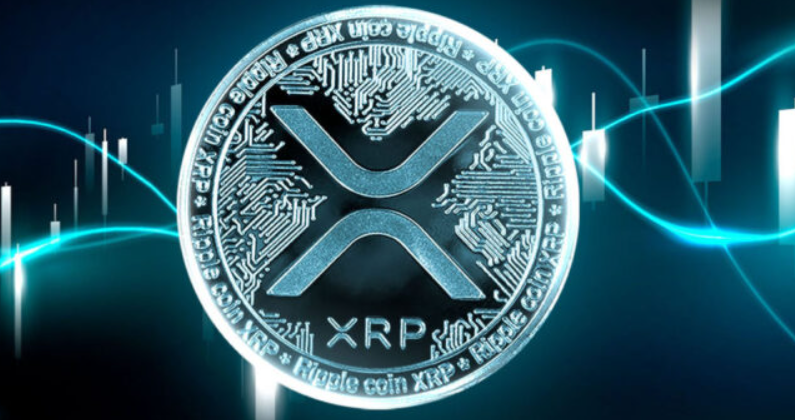
XRP Price USD: Can it Compete with Traditional Currencies?
Introduction: Understanding XRP and Its Current Market Position
XRP, a digital currency created by Ripple Labs, has gained significant attention in the cryptocurrency world. As an asset that facilitates cross-border payments, it has been marketed as a solution to some of the inefficiencies in traditional financial systems. However, questions remain regarding its ability to compete with traditional fiat currencies and its real value in terms of USD or USDT. The price of XRP, especially against USD, has fluctuated wildly over the years, prompting investors to debate its long-term potential. But can XRP truly compete with traditional currencies like the US Dollar, or is it merely another speculative asset?
In this article, we will explore the current XRP price USDT, the dynamics behind its price fluctuations, and whether it can establish itself as a viable competitor to traditional currencies. We will also compare XRP with other prominent stablecoins like USDT, providing a clear understanding of its place in the global financial ecosystem.
What is XRP? A Brief Overview
Before we delve deeper into the current XRP price USD trends, let’s first understand what XRP is and how it works. XRP is the native cryptocurrency of the Ripple network, designed to facilitate fast, low-cost international payments. Ripple Labs, the company behind XRP, created the coin to address the inefficiencies associated with traditional financial systems, such as long transaction times and high fees.
Unlike Bitcoin or Ethereum, which are decentralized, Ripple’s network operates with a centralized model, although XRP itself is decentralized. This distinction is crucial because it means that Ripple, the company, has significant influence over the supply and use of XRP.
The Role of XRP in the Global Financial System
Ripple aims to revolutionize the traditional banking system by enabling instantaneous and low-fee cross-border transactions. XRP facilitates this process by acting as a bridge currency, allowing users to exchange currencies without needing intermediaries like traditional banks.
The key benefits of XRP include:
- Fast Transactions: XRP transactions are completed in seconds, as opposed to the hours or even days it may take for traditional cross-border transfers.
- Low Fees: Transaction fees on the XRP network are a fraction of those charged by traditional financial institutions.
- Scalability: XRP is designed to handle a high volume of transactions, which is crucial for the future of digital payments.
XRP Price USD: Current Market Trends
The price of XRP has been volatile, fluctuating between rapid growth and sharp declines. As of now, the XRP price USD is significantly impacted by various factors, including market sentiment, regulatory decisions, and technological advancements. XRP’s value is closely tied to the overall performance of the cryptocurrency market, but its unique positioning in the financial system provides a different set of dynamics.
For instance, during market booms, XRP’s price often experiences large price movements, although it tends to lag behind major coins like Bitcoin and Ethereum. Conversely, during market crashes or corrections, XRP’s price also drops, sometimes more significantly than its competitors.
Factors Influencing XRP Price USD
Several factors impact the XRP price USD, including:
- Regulatory Developments: Ripple Labs has faced several legal battles, most notably with the U.S. Securities and Exchange Commission (SEC), which has influenced the price of XRP significantly. Any new regulatory announcements can lead to price volatility.
- Adoption by Financial Institutions: The more financial institutions adopt Ripple’s technology for cross-border payments, the higher the demand for XRP. This adoption has a direct impact on its value.
- Market Sentiment: Like all cryptocurrencies, XRP’s price is heavily influenced by market sentiment. Positive news regarding Ripple or the broader crypto market can lead to price rallies, while negative news or regulatory crackdowns can cause sharp declines.
- Technological Advancements: Innovations or upgrades to Ripple’s protocol that enhance the network’s scalability, speed, and efficiency can positively affect XRP’s price.
Can XRP Compete with Traditional Currencies?
Now, let’s answer the crucial question: Can XRP price USD be a viable competitor to traditional fiat currencies like the US Dollar?
Advantages Over Traditional Currencies
XRP’s primary advantage over traditional currencies is its ability to enable faster and cheaper cross-border payments. Unlike traditional banks or payment systems, which require multiple intermediaries, XRP can settle transactions almost instantaneously with minimal fees. This has the potential to revolutionize the way money moves across borders, making traditional banking systems appear slow and costly in comparison.
Moreover, XRP is not directly subject to the inflationary pressures that affect fiat currencies, which makes it a potentially attractive store of value for certain investors and users.
Challenges Facing XRP in Competing with Fiat Currencies
Despite its advantages, there are several challenges that XRP faces when competing with traditional currencies like USD:
- Regulatory Uncertainty: XRP’s legal battles, especially with the SEC, continue to create uncertainty around its future. Until there is clear regulation, XRP may struggle to gain broader adoption.
- Volatility: Unlike stable currencies such as the US Dollar or USDT, XRP is highly volatile. This volatility makes it less reliable as a medium of exchange, especially for everyday transactions.
- Lack of Widespread Use: While XRP has been adopted by several financial institutions, it still has a long way to go before it can replace traditional currencies in everyday commerce.
XRP vs. USDT: A Comparison
Both XRP and USDT (Tether) are widely used in the cryptocurrency world, but they serve different purposes. While XRP aims to replace traditional currencies by facilitating faster, cheaper cross-border payments, USDT is a stablecoin pegged to the value of the US Dollar. Here’s how the two compare:
| Feature | XRP | USDT |
|---|---|---|
| Purpose | Cross-border payments | Stability as a fiat-backed token |
| Price Volatility | High | Very Low (Pegged to USD) |
| Regulation | Ongoing legal challenges | Stable (as a fiat-backed coin) |
| Adoption | Gaining traction among banks | Widely used across exchanges |
| Market Demand | Fluctuates with crypto market | Stable due to its peg to USD |
While USDT has found its niche as a stablecoin for trading and hedging, XRP’s mission is to reshape global finance. However, XRP’s volatility and regulatory challenges mean that it has not yet been able to fully compete with the stability and widespread acceptance of USDT or fiat currencies.
The Future of XRP in the Global Economy
Looking ahead, XRP price USD will likely continue to experience fluctuations as the cryptocurrency market matures. However, XRP’s role in global payments may evolve as financial institutions increasingly turn to blockchain technology to streamline transactions. As Ripple expands its network and gains more partnerships, there is potential for XRP to be adopted on a larger scale.
If XRP can overcome its legal and regulatory hurdles, it may be positioned as a more efficient alternative to traditional payment systems. In that case, it could become a powerful player in the global financial system, albeit not replacing fiat currencies like the USD in the immediate future.
FAQs About XRP Price USD
1. What is the current XRP price in USD?
The current price of XRP in USD fluctuates due to market conditions. For the latest update, you should consult real-time cryptocurrency price tracking tools.
2. How is XRP different from Bitcoin?
XRP is designed for fast, low-cost cross-border payments, whereas Bitcoin is primarily a store of value and an investment asset. XRP is also more centralized compared to Bitcoin.
3. Can XRP replace the US Dollar?
While XRP has the potential to revolutionize payments, it is unlikely to replace the US Dollar anytime soon. Fiat currencies, including the USD, have entrenched positions in the global economy.
4. Is XRP a stable investment?
XRP’s price is volatile, and it faces legal challenges, making it a risky investment. It’s important to consider these factors before investing.
5. How does XRP compare with stablecoins like USDT?
XRP is highly volatile, while USDT is pegged to the US Dollar, providing stability. XRP aims to revolutionize payments, while USDT is mainly used as a stable trading asset.
6. What factors affect the XRP price?
The XRP price is influenced by factors such as regulatory news, market sentiment, adoption by financial institutions, and the overall state of the cryptocurrency market.
Conclusion: The Future of XRP and Traditional Currencies
In conclusion, XRP price USD is certainly an interesting asset to watch, especially considering its potential to disrupt the global financial system. While it may not yet rival traditional currencies like the US Dollar or stablecoins such as USDT in terms of stability, it holds promise in the world of cross-border payments. The future of XRP will depend heavily on overcoming its regulatory hurdles and broadening its adoption in the financial industry.
XRP might not be replacing traditional currencies anytime soon, but it could very well play a significant role in transforming how we send money across borders. Investors and users will need to keep a close eye on its development and how the regulatory landscape unfolds in the coming years.




